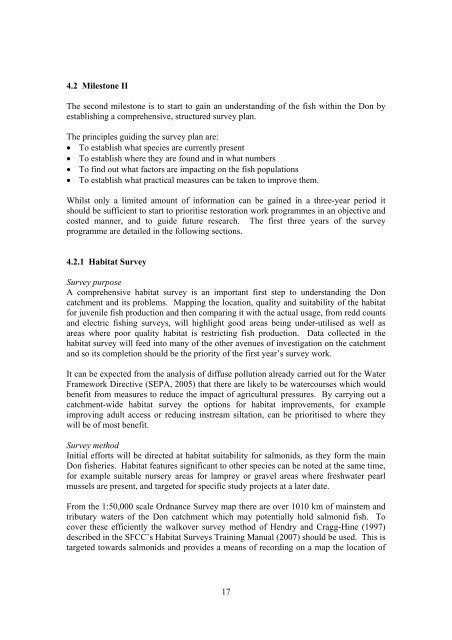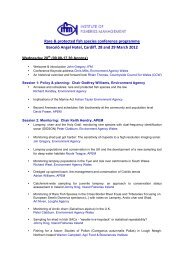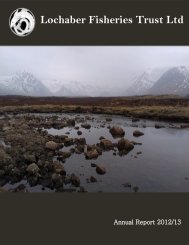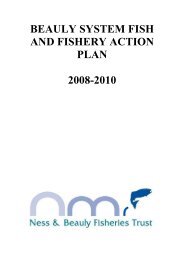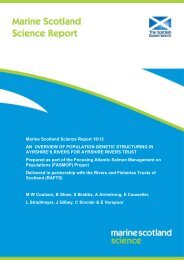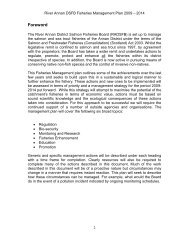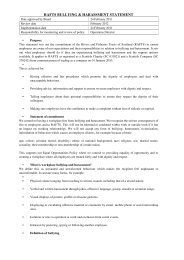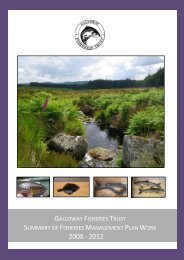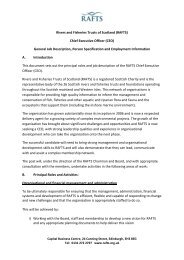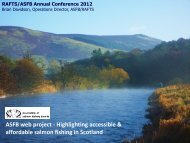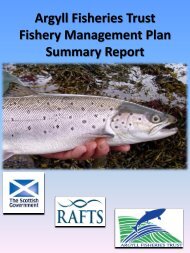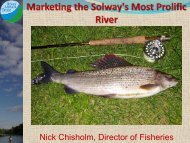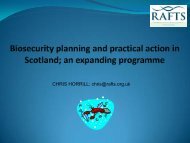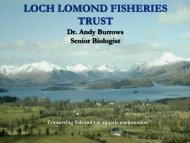Create successful ePaper yourself
Turn your PDF publications into a flip-book with our unique Google optimized e-Paper software.
4.2 Milestone IIThe second milestone is to start to gain an understanding of the fish within the <strong>Don</strong> byestablishing a comprehensive, structured survey plan.The principles guiding the survey plan are:• To establish what species are currently present• To establish where they are found and in what numbers• To find out what factors are impacting on the fish populations• To establish what practical measures can be taken to improve them.Whilst only a limited amount of information can be gained in a three-year period itshould be sufficient to start to prioritise restoration work programmes in an objective andcosted manner, and to guide future research. The first three years of the surveyprogramme are detailed in the following sections.4.2.1 Habitat SurveySurvey purposeA comprehensive habitat survey is an important first step to understanding the <strong>Don</strong>catchment and its problems. Mapping the location, quality and suitability of the habitatfor juvenile fish production and then comparing it with the actual usage, from redd countsand electric fishing surveys, will highlight good areas being under-utilised as well asareas where poor quality habitat is restricting fish production. Data collected in thehabitat survey will feed into many of the other avenues of investigation on the catchmentand so its completion should be the priority of the first year’s survey work.It can be expected from the analysis of diffuse pollution already carried out for the WaterFramework Directive (SEPA, 2005) that there are likely to be watercourses which wouldbenefit from measures to reduce the impact of agricultural pressures. By carrying out acatchment-wide habitat survey the options for habitat improvements, for exampleimproving adult access or reducing instream siltation, can be prioritised to where theywill be of most benefit.Survey methodInitial efforts will be directed at habitat suitability for salmonids, as they form the main<strong>Don</strong> fisheries. Habitat features significant to other species can be noted at the same time,for example suitable nursery areas for lamprey or gravel areas where freshwater pearlmussels are present, and targeted for specific study projects at a later date.From the 1:50,000 scale Ordnance Survey map there are over 1010 km of mainstem andtributary waters of the <strong>Don</strong> catchment which may potentially hold salmonid fish. Tocover these efficiently the walkover survey method of Hendry and Cragg-Hine (1997)described in the SFCC’s Habitat Surveys Training Manual (2007) should be used. This istargeted towards salmonids and provides a means of recording on a map the location of17


